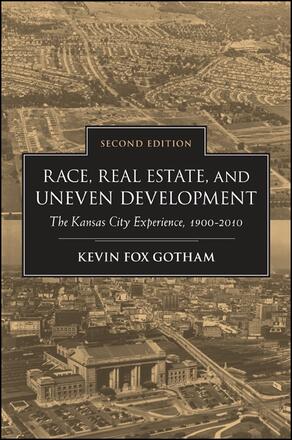
Race, Real Estate, and Uneven Development, Second Edition
The Kansas City Experience, 1900-2010
Alternative formats available from:
Updated second edition examining how the real estate industry and federal housing policy have facilitated the development of racial residential segregation.
Description
Traditional explanations of metropolitan development and urban racial segregation have emphasized the role of consumer demand and market dynamics. In the first edition of Race, Real Estate, and Uneven Development Kevin Fox Gotham reexamined the assumptions behind these explanations and offered a provocative new thesis. Using the Kansas City metropolitan area as a case study, Gotham provided both quantitative and qualitative documentation of the role of the real estate industry and the Federal Housing Administration, demonstrating how these institutions have promulgated racial residential segregation and uneven development. Gotham challenged contemporary explanations while providing fresh insights into the racialization of metropolitan space, the interlocking dimensions of class and race in metropolitan development, and the importance of analyzing housing as a system of social stratification. In this second edition, he includes new material that explains the racially unequal impact of the subprime real estate crisis that began in late 2007, and explains why racial disparities in housing and lending remain despite the passage of fair housing laws and antidiscrimination statutes.
Kevin Fox Gotham is Professor of Sociology at Tulane University.
Reviews
Praise for the First Edition
"This work challenges the notion that demographic change and residential patterns are 'natural' or products of free market choices … [it] contributes greatly to our understanding of how real estate interests shaped the hyper-segregation of American cities, and how government agencies[,] including school districts, worked in tandem to further demark the separate and unequal worlds in metropolitan life. " — H-Net Reviews (H-Education)
"A hallmark of this book is its fine-grained analysis of just how specific activities of realtors, the FHA program, and members of the local school board contributed to the residential segregation of blacks in twentieth century urban America. A process Gotham labels the 'racialization of urban space'—the social construction of urban neighborhoods that links race, place, behavior, culture, and economic factors—has led white residents, realtors, businessmen, bankers, land developers, and school board members to act in ways that restricted housing for blacks to specific neighborhoods in Kansas City, as well as in other cities. " — Philip Olson, University of Missouri–Kansas City
"This is a book which is greatly needed in the field. Gotham integrates, using historical data, the involvement of the real estate industry and the collusion of the federal government in the manufacturing of racially biased housing practices. His work advances the struggle for civil rights by showing that solving the problem of racism is not as simple as banning legal discrimination, but rather needs to address the institutional practices at all levels of the real estate industry. " — Talmadge Wright, author of Out of Place: Homeless Mobilizations, Subcities, and Contested Landscapes